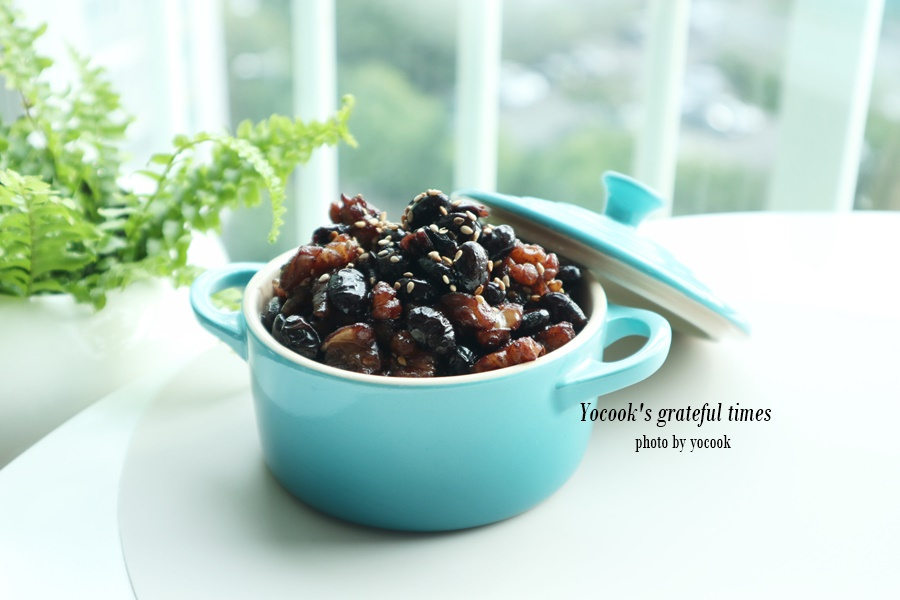Soaking Black Soybeans (Seoritae Kongjang) – Soft and Glossy
How to Make Soft and Flavorful Seoritae Kongjang (Braised Black Soybeans)

Seoritae, also known as ‘sokcheong’ (meaning blue inside), is a celebrated black food renowned for its health benefits. While its skin is black, the interior is a vibrant blue, giving it a unique character. When cooked with rice, it offers a delightful texture similar to chestnuts, boasting a rich, nutty flavor. Enjoying Seoritae daily with your meals enhances the taste of your rice, and it’s also a healthy addition when made into soy milk. Today, we’re sharing a recipe for delicious braised black soybeans, made to be perfectly tender and beautifully glossy, ensuring a side dish the whole family will love.
Ingredients- Seoritae (black soybeans) 200g
- Walnuts 150g
- Soy sauce 1/2 cup (approx. 100ml)
- Low-sodium fish sauce 2 Tbsp
- Oligosaccharide 1/3 cup (approx. 67ml)
- Sugar 1 Tbsp
- Sesame oil 2 Tbsp
- Toasted sesame seeds 1 Tbsp
- Water 2 cups (approx. 400ml)
Cooking Instructions
Step 1
First, rinse the Seoritae beans thoroughly under running water. Place the rinsed beans in a bowl and add about 5 times their volume of water. Let them soak for at least half a day, or until fully plump. Do not discard the soaking water; it will be used in the cooking process. Soaking the beans sufficiently is key to achieving a tender rather than tough kongjang.

Step 2
Once the beans are fully hydrated, they are ready for cooking.

Step 3
Transfer the soaked Seoritae beans and their soaking water into a deep pan or pot. Add the soy sauce (1/2 cup), low-sodium fish sauce (2 Tbsp), and an additional 2 cups of water. Bring this mixture to a boil over high heat.

Step 4
Once the liquid starts boiling, reduce the heat to medium and let it simmer and reduce. When the liquid has reduced to about half its original volume, add the prepared walnuts and continue to braise them together with the beans. You can also add other nuts like pecans or your favorites at this stage for extra flavor and texture.

Step 5
As the walnuts and beans continue to cook, and the liquid reduces further to about one-third of its volume, stir in the oligosaccharide (1/3 cup) and sugar (1 Tbsp). Mix well until the sugar is dissolved, then continue to simmer until a glossy glaze forms. If you don’t have oligosaccharide, honey can be used as a substitute.

Step 6
The kongjang is almost ready when the liquid has significantly reduced, leaving only a little at the bottom, and the beans have a beautiful, glossy sheen. This indicates that they are perfectly cooked and coated.

Step 7
Finally, turn off the heat and sprinkle in the toasted sesame seeds (1 Tbsp). If desired, add another tablespoon of sesame oil for extra aroma and mix gently to combine. Your delicious Seoritae Kongjang is now complete! Serve it warm over steamed rice for a delightful meal.




